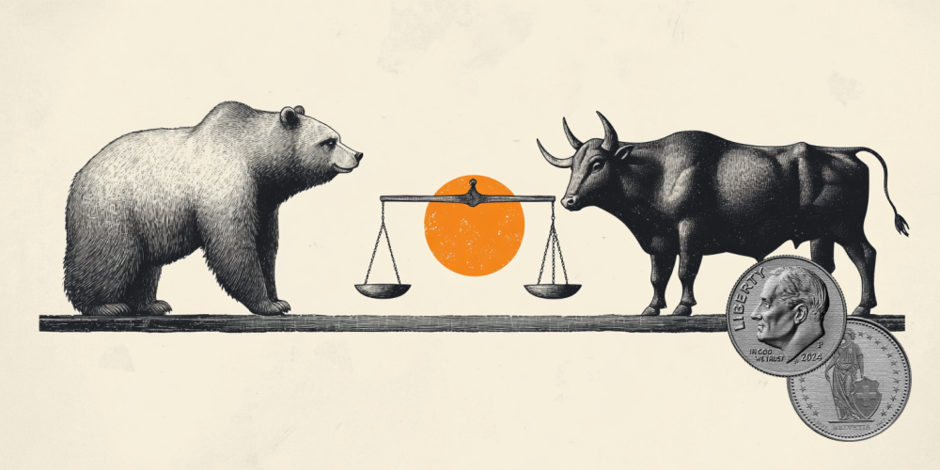USD/CHF Price Forecast: Consolidates below 0.8245-0.8250 horizontal barrier
- USD/CHF struggles to gain any meaningful traction and remains confined in a narrow band.
- The formation of an ascending triangle on hourly charts supports prospects for further gains.
- A convincing break below the 0.8200 mark will be seen as a fresh trigger for bearish traders.

The USD/CHF pair extends its consolidative price move through the Asian session on Wednesday and remains confined in a range held over the past two weeks or so amid mixed cues. The emergence of some US Dollar (USD) buying lends some support to spot prices, though reviving safe-haven demand acts as a headwind.
Looking at the broader picture, the recent bounce from the vicinity of mid-0.8100s, or the lowest level since April 22 touched last week, has been along an upward-sloping line. This, along with a strong horizontal barrier near the 0.8245-0.8250 region, constitutes the formation of an ascending triangle on hourly charts and favors the USD/CHF bulls. However, it will be prudent to wait for a convincing breakout through the said hurdle before positioning for any further gains.
Spot prices might then surpass an intermediate hurdle near the 0.8275 area and aim to reclaim the 0.8300 round figure. The momentum could extend further toward the next relevant resistance near the 0.8325-0.8330 supply zone. Some follow-through buying will suggest that the USD/CHF pair has formed a near-term bottom and pave the way for additional gains.
On the flip side, the ascending trend-line support, currently pegged just above the 0.8200 mark, might continue to protect the immediate downside. This is followed by the monthly swing low, around the 0.8155 region, which if broken, will be seen as a fresh trigger for bearish traders. The subsequent downfall could drag the USD/CHF pair to the 0.8100 round figure en route to the April swing low, around the 0.8040 region, or the lowest level since September 2011.
USD/CHF 4-hour chart

Swiss Franc FAQs
The Swiss Franc (CHF) is Switzerland’s official currency. It is among the top ten most traded currencies globally, reaching volumes that well exceed the size of the Swiss economy. Its value is determined by the broad market sentiment, the country’s economic health or action taken by the Swiss National Bank (SNB), among other factors. Between 2011 and 2015, the Swiss Franc was pegged to the Euro (EUR). The peg was abruptly removed, resulting in a more than 20% increase in the Franc’s value, causing a turmoil in markets. Even though the peg isn’t in force anymore, CHF fortunes tend to be highly correlated with the Euro ones due to the high dependency of the Swiss economy on the neighboring Eurozone.
The Swiss Franc (CHF) is considered a safe-haven asset, or a currency that investors tend to buy in times of market stress. This is due to the perceived status of Switzerland in the world: a stable economy, a strong export sector, big central bank reserves or a longstanding political stance towards neutrality in global conflicts make the country’s currency a good choice for investors fleeing from risks. Turbulent times are likely to strengthen CHF value against other currencies that are seen as more risky to invest in.
The Swiss National Bank (SNB) meets four times a year – once every quarter, less than other major central banks – to decide on monetary policy. The bank aims for an annual inflation rate of less than 2%. When inflation is above target or forecasted to be above target in the foreseeable future, the bank will attempt to tame price growth by raising its policy rate. Higher interest rates are generally positive for the Swiss Franc (CHF) as they lead to higher yields, making the country a more attractive place for investors. On the contrary, lower interest rates tend to weaken CHF.
Macroeconomic data releases in Switzerland are key to assessing the state of the economy and can impact the Swiss Franc’s (CHF) valuation. The Swiss economy is broadly stable, but any sudden change in economic growth, inflation, current account or the central bank’s currency reserves have the potential to trigger moves in CHF. Generally, high economic growth, low unemployment and high confidence are good for CHF. Conversely, if economic data points to weakening momentum, CHF is likely to depreciate.
As a small and open economy, Switzerland is heavily dependent on the health of the neighboring Eurozone economies. The broader European Union is Switzerland’s main economic partner and a key political ally, so macroeconomic and monetary policy stability in the Eurozone is essential for Switzerland and, thus, for the Swiss Franc (CHF). With such dependency, some models suggest that the correlation between the fortunes of the Euro (EUR) and the CHF is more than 90%, or close to perfect.
Author

Haresh Menghani
FXStreet
Haresh Menghani is a detail-oriented professional with 10+ years of extensive experience in analysing the global financial markets.

















